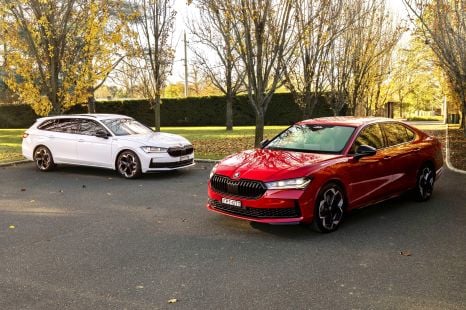

Max Davies
2025 Skoda Superb Sportline review
3 Months Ago
Mazda's ageing little hatchback is a neat little car for first and last car buyers, if you can live without the latest and greatest tech.
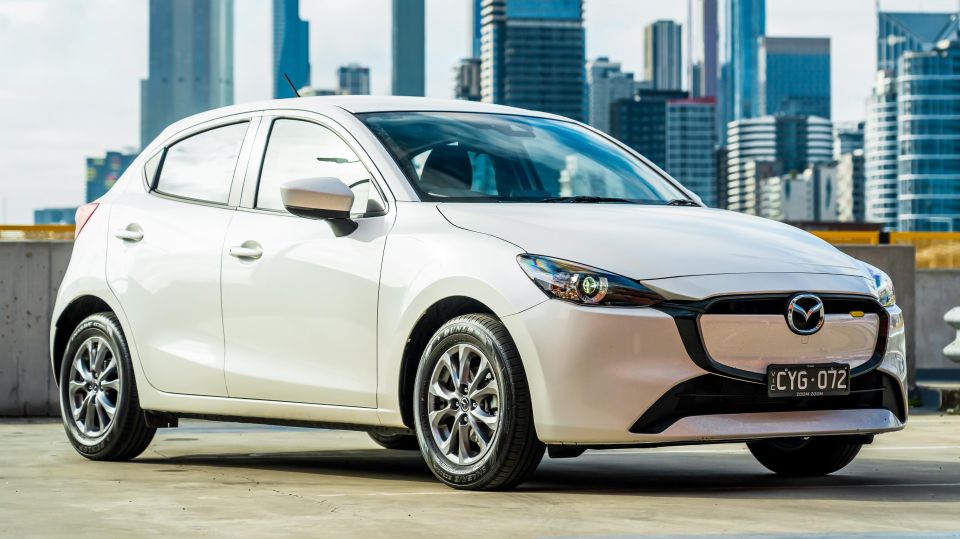


Quickly see how this car stacks up against its competition. Select any benchmark to see more details.
Where expert car reviews meet expert car buying – CarExpert gives you trusted advice, personalised service and real savings on your next new car.
This may not be the cheapest small car you can buy, but you’d be wrong to look past it.

The Mazda 2 is nothing new – its current generation has just turned 10 years old. Though it’s not the same car as it was when it first hit the market, it still has the same charm its nameplate is known for.
With its latest facelift it’s kept up with the times in the most Mazda 2 way, as its face got a refresh with a body-coloured panel accented by a neon freckle in place of a standard grille. Isn’t that cute?
But once you get past all that, you’ll remember it used to slide under $15,000. A lot has changed since 2014, and that number has now soared up past $22,000.
It’s not in the running to be the cheapest car in Australia (albeit not far off), but still has to square up against the likes of the Suzuki Swift and the outlandishly popular MG 3, both of which recently received major updates.
On test here is the standard Mazda 2 G15 Pure Hatch manual; the cheapest Mazda you can get in Australia right now. It wins extra brownie points for packing a manual transmission, which has become rare in standard, non-performance cars.
Does it still have a spot at the cheap car table, or has the competition well and truly put it in its place?
The manual Mazda 2 costs just under $23,000 before on-roads, placing more or less in line with the base MG 3 ($24,990 drive-away) and the base manual Swift ($24,490 drive-away).
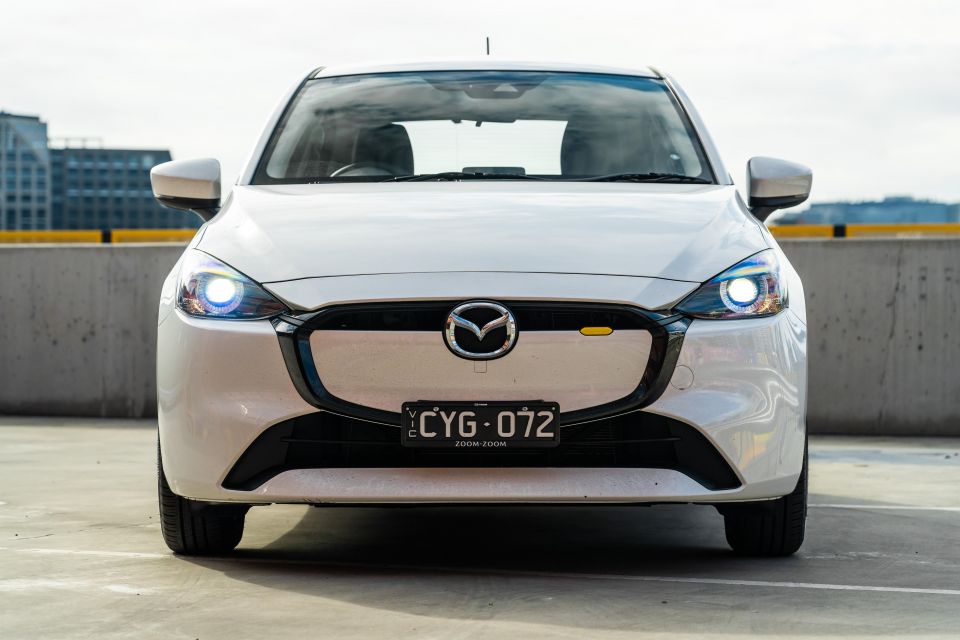
It’s still a way off Australia’s cheapest car, which is the Kia Picanto. In its cheapest form, that car costs $17,890 before on-roads.
| Model Variant | Price before on-road costs |
|---|---|
| Mazda 2 G15 Pure manual hatch | $22,720 |
| Mazda 2 G15 Pure automatic hatch | $24,720 |
| Mazda 2 G15 Pure automatic sedan | $24,720 |
| Mazda 2 G15 Pure SP hatch | $25,520 |
| Mazda 2 G15 Evolve hatch | $26,220 |
| Mazda 2 G15 GT hatch | $27,920 |
| Mazda 2 G15 GT sedan | $27,920 |
To see how the Mazda 2 compares with its rivals, use our comparison tool.
Buy your new car without the stress. It's fast, simple and completely free.

Great service from Travis and team, second time I have used this business would not hesitate to recommend them to anyone
Craig C.
Purchased a Ford Ranger in Sunshine Coast, QLD
CarExpert helped Craig save $7,224 on his Ford Ranger, now let us save you on your next new car.
Get your BEST priceIt’s a small, cheap Mazda, so it’d be wrong to expect too much.
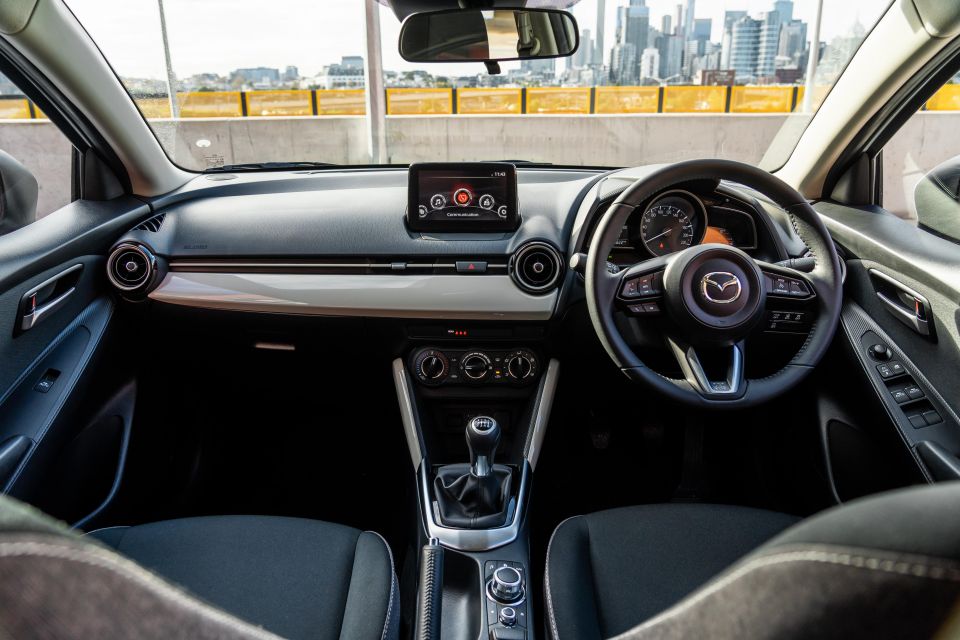
That’s not to say it’s bad, because it’s still a comfortable place to be. The seats are quite soft, and because there’s no powered adjustment it can take a second to get into a good driving position.
If you’re coming from another cheap car, an older car, or this is your first car, that won’t be a problem. Just note you’ll want to get yourself comfortable because you’ll be moving your leg around a bit more than in most cars to use the clutch pedal.
Other than that, it’s a case of what you see is what you get. It’s fairly bare, aside from some design elements like faux carbon fibre on the door cards and the body-colour panel spanning the dashboard, which offer more character.
On the dashboard are three circular air vents, as well as central vent for the front passenger hidden within the horizontal silver trim piece. Climate control is operated by three dials above the centre console – a traditional setup that’s becoming less common as the years progress.
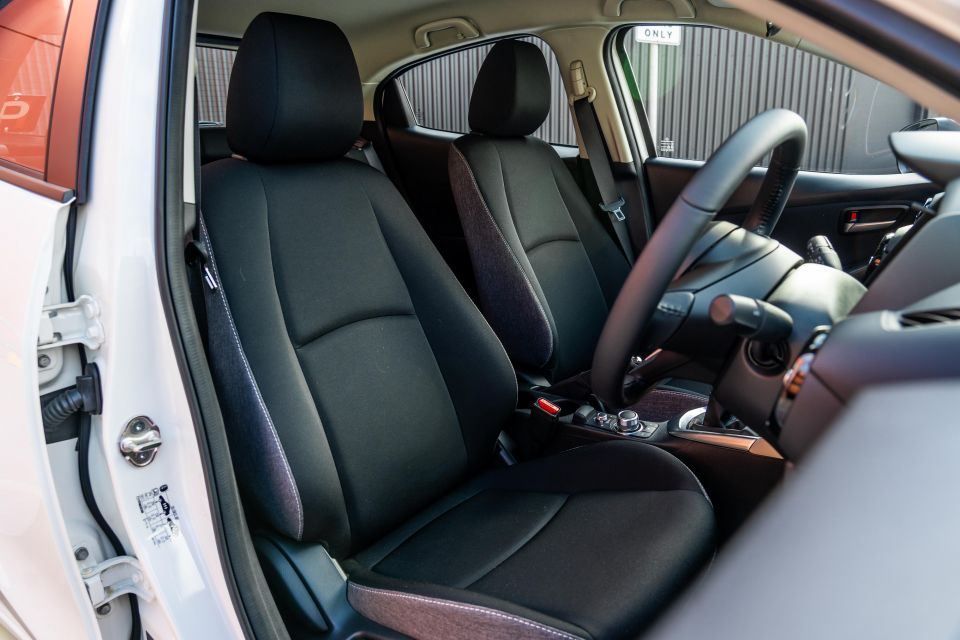

In typical Mazda fashion the infotainment system is mounted front and centre on the dash, though it’s not what we’re used to. Unlike what you’ll find in even the cheapest Mazda 3, this system seems to be barely hanging in there in the modern market.
It does offer wired Apple CarPlay and Android Auto as standard, but its graphics in particular are now quite dated. It’s also a small screen at 7.0 inches, especially when you can opt for a 10.25-inch screen in the base Mazda 3.
Touchscreen functionality is disabled when you’re on the move, to the ire of front passengers. In other Mazda models with the updated system, you can select an option that will still let you use the touchscreen when you’re driving – otherwise you’ve got the typical central dials to control the screen.
I like the dial setup Mazda is including with all its cars. It’s not for everyone and can definitely be a bit clunky if you’re trying to control CarPlay, but it works well with the native infotainment software.


The main issue in its functionality in this car is that it can be laggy at times, especially when it’s still waking up. Even so, features packed in include built-in satellite navigation, all of which improve the in-car experience.
Ahead of you is a generously sized leather-wrapped steering wheel, which is the same as what you’ll find in other cheap Mazdas like the related CX-3. It still has all the conventional buttons for infotainment and cruise control, but that’s about it.
There’s no complaints here though, because it’s nice to hold and is shaped right in all the important places. The buttons all work as they should, and there’s nothing left to guesses thanks to their clear markings and imagery.
Behind the wheel is a traditional instrument cluster, which comprises an analogue speedometer flanked by two LCD displays. Everything here is easy to read, and its simplicity is a product of both the Mazda 2’s age and its barebones approach.
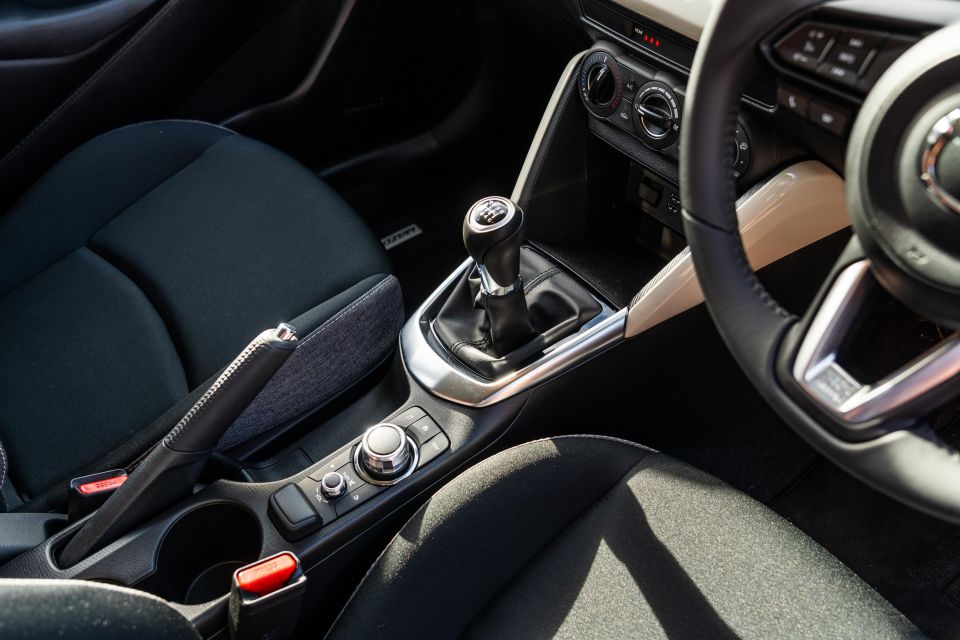
Everything relating to the driving experience is as it should be, which means this car is perfect as a cheap, small daily runabout.
Storage around the cabin is understandably limited. You get bottle holders in the doors, a glovebox, a small cubby ahead of the gear shifter, and a cubby behind the two central cupholders.
There’s no lidded box in the centre console, which means there’s no armrest for comfortable use of the central dial like there is in the Mazda 3 or CX-3. A lot of the space on the centre console is taken up by the mechanical handbrake lever, but it’s not the end of the world.
Charging and phone connectivity is done via a 12V outlet and dual USB-A ports up front, alongside a dedicated AUX jack.

Surprise surprise, the rear of the Mazda 2 is just as small as the front. It’s not built to be a people mover, which means the rear seats are best suited to ferrying smaller people around on shorter drives.
The two outboard seats are plush and perfectly reasonable for the job they need to do, just note that sitting behind a tall driver will seriously eat into leg room.
Sitting in the middle is also possible, but even if it is a wider seating area than you may expect, you’d better hope the drive is short.
At least there’s a bit of flair going on back here, as the front seat backs and bench bottoms are upholstered in a textured grey cloth. That makes it a little more interesting to look at than just standard black fabric, but otherwise there are no amenities or tech goodies back here.

There isn’t even a fold-down central armrest, which means no additional cupholders to help with those late night Macca’s runs.
Rounding it all off is a compromised boot, which really doesn’t offer a lot of space. The reclined angle of the rear seats eats into space higher up, but the load floor is a fairly generous square shape that’ll fit a couple of shopping bags or small suitcases easily.
Loading it up is made difficult by a small opening and high boot lip, but removing the sturdy cargo cover will give you a bit more space if you’ve got taller items.
The rear seats also split 60/40, which unlocks more room if needed. It’s better than nothing even if they don’t fold flat, and you still get a space saver spare wheel instead of a tedious tyre repair kit – unusual for a car this small.
Generally speaking, the cabin may be lacking in tech and plastered in mostly hard plastics, but it’s still very comfortable as a small daily commuter and holds up well against its competition.
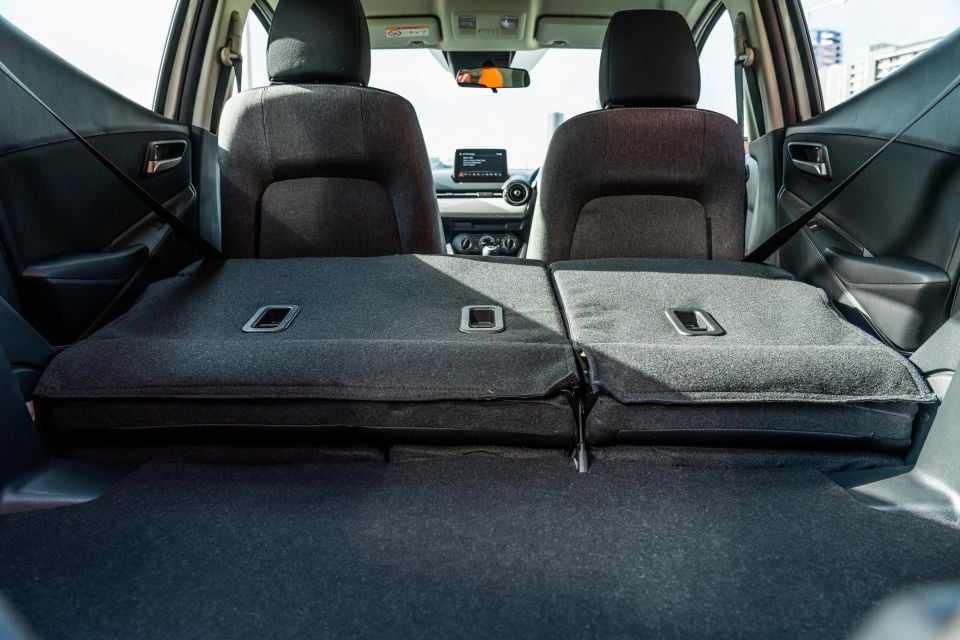
| Dimensions | Mazda 2 Hatch |
|---|---|
| Length | 4085mm |
| Width | 1983mm (1695 excl. mirrors) |
| Height | 1495mm |
| Wheelbase | 2570mm |
| Boot capacity (VDA) | 250L – 2nd row up |
To see how the Mazda 2 compares with its rivals, use our comparison tool.
The entire Mazda 2 range is powered by the same naturally aspirated 1.5-litre four-cylinder engine. It’s by no means fast, but it still has plenty of character.
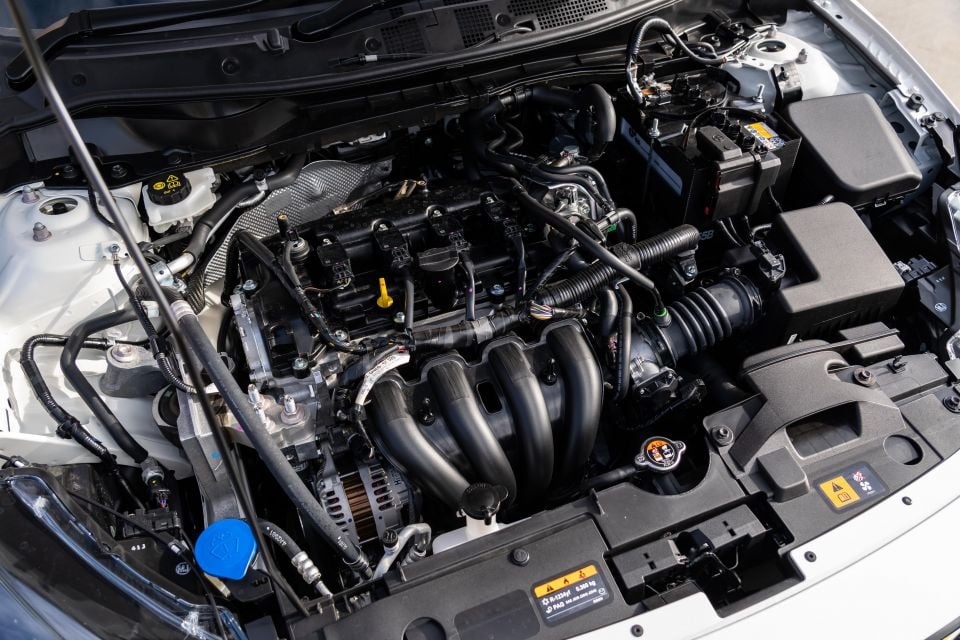
| Model | Mazda 2 G15 Pure |
|---|---|
| Engine | 1.5L 4cyl petrol |
| Power | 82kW @ 6000rpm |
| Torque | 144Nm @ 4000rpm |
| Transmission | 6-speed manual |
| Driven wheels | Front-wheel drive |
| Weight | 1085kg (kerb) |
| Fuel economy – claimed | 5.4L/100km |
| Fuel economy – as tested | 5.9L/100km |
| Fuel tank size | 44L |
| Fuel requirement | 91 RON |
To see how the Mazda 2 compares with its rivals, use our comparison tool.
I was pleasantly surprised by the Mazda 2’s driving dynamics.
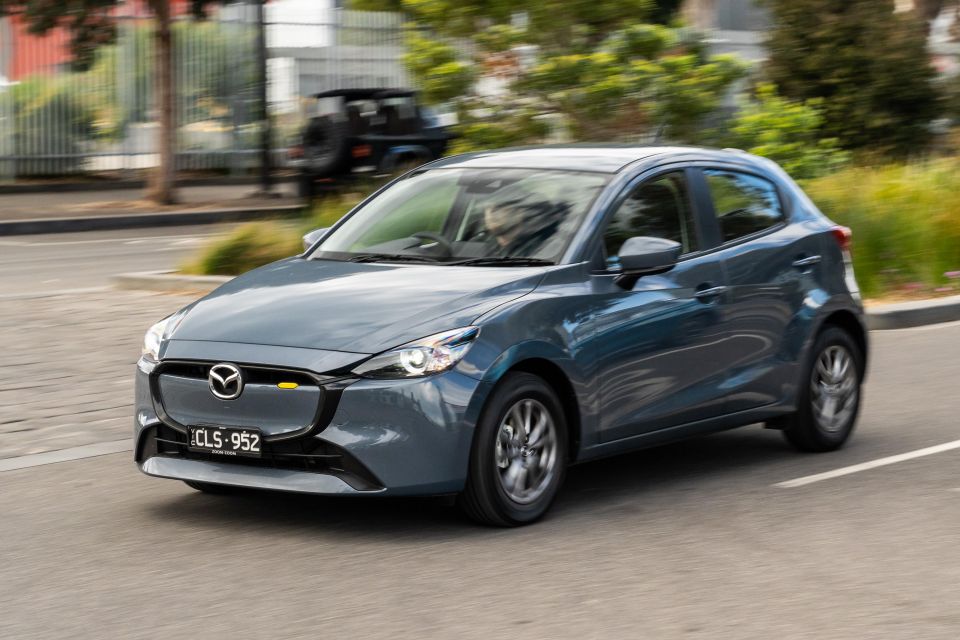
It’s a small economy hatch, but it’s quite fun behind the wheel. There’s something about being able to drive such a car with a modern manual transmission that will never not be enjoyable, even if it’s low on power.
The key factor in this car is the transmission, which is very easy to work with. The clutch is nicely weighted for a good balance between feel and drivability, and while the shifter action isn’t as crisp as in some other sportier cars, it’s still direct enough to not leave you unsure of what gear you’re going for.
It all adds up to create a car that’s impressively easy to drive smoothly. Even some of our staff members with limited manual experience had no trouble getting in for a quick spin, even if it was just for a couple of laps around a carpark.
Even with just 82kW to work with, the manual transmission makes it so much more enjoyable if you’re someone who wants to be actively involved in the driving experience. Who cares if the 1.5-litre engine is a little unrefined and makes a bit of a racket when you’re having fun?
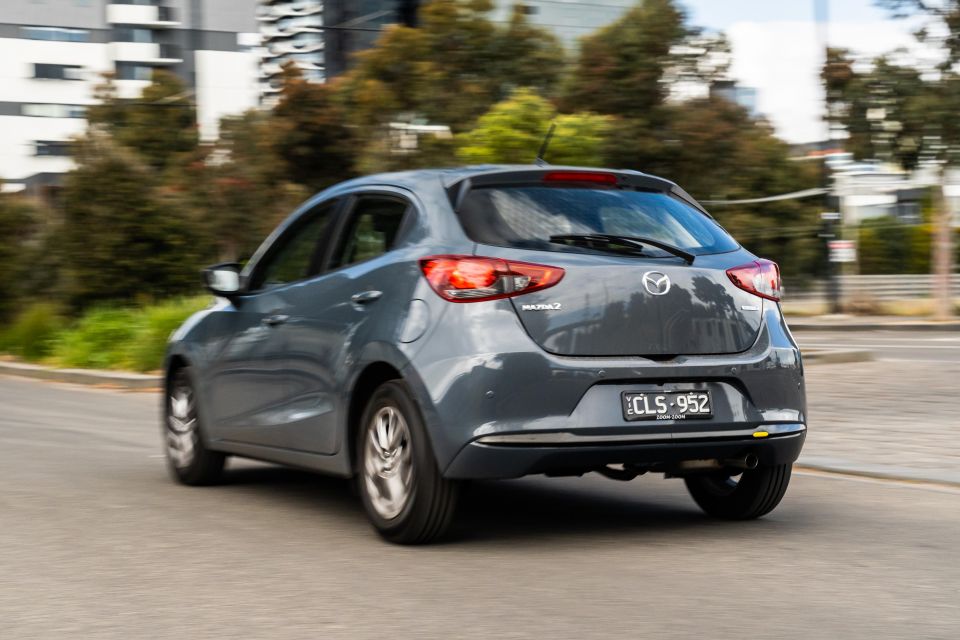
The first thing you’ll notice on the road is how small you feel. If you like to have a bit more of a commanding presence in your lane on the highway, this mightn’t be the car for you.
Driving alongside trucks can be unsettling, especially if you’re driving some rain on a wet road. Vigilant drivers should still have no issue spotting you – especially if you’ve got those LED headlights on – but I can understand why you might want something a bit bigger.
That’s not a reason to wipe this car off the list, because the included tech is plenty to make up for its size.
Cruise control is included as standard, albeit not adaptive like it is at the top of the Mazda 2 range. You also don’t get lane keep assist for that cruise control, but it’s not the worst omission given it is, again, a cheap car – and worth it if you’re still developing your skills on the road.

Where expert car reviews meet expert car buying – CarExpert gives you trusted advice, personalised service and real savings on your next new car.
It does help to have blind-spot monitoring when you’re on the highway though, and head checks are easy enough thanks to the good rear quarter visibility.
The second takeaway is how light the Mazda 2 feels. It’s quoted at just over one tonne, and the experience on the road reflects that.
Gusts of wind are noticeable on the highway, which means it takes some extra focus to drive in inclement weather. If you’re paying attention though, you won’t have any issues keeping the car on the straight and narrow.
As a positive, it’s zippy and nimble enough to allow you to scoot into whatever small gap in traffic you need to be in. You can also downshift to allow it to rev up faster, or make use of additional engine braking. The light frame of the Mazda 2 doesn’t take much to slow down if you need to jump on the brakes.

Its tyres are quite small on account of the 15-inch wheels, which means it can tend to fall into bumps a bit more than larger cars. Still, it’s a bonus to have alloys included as standard, unlike the steel wheels on the base Swift.
You will be a bit uncomfortable on rural roads where there are a lot more potholes and rough sections of asphalt, but the Mazda 2 is nimble and narrow enough to be able to weave around imperfections. The car also has no problem with you briefly crossing the median line if you need to avoid a hole or bump.
With that in mind, the Mazda 2’s strength is slower driving on tight city streets. Its diminutive stature is a serious strength here, as it’s easy to know exactly where you’re placing the car when you’re driving down narrow streets or alongside larger vehicles and trams.
Parking is exceptionally easy as a result, and while it does lack a surround-view camera, it’s super easy to back into a parallel parking spot or make your way around a tight parking garage.
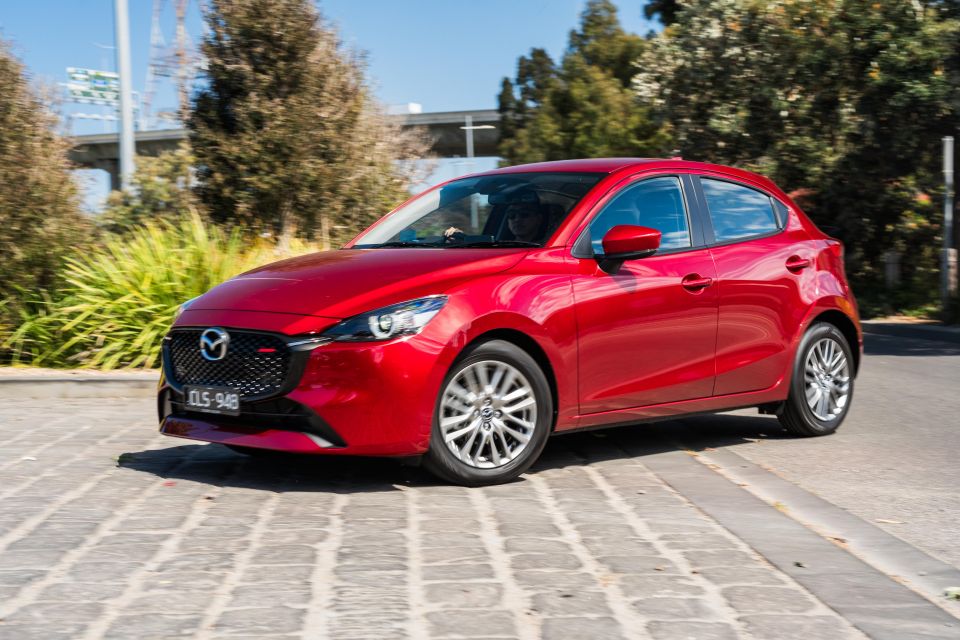
You do still get rear parking sensors and a reversing camera, though be warned it’s a low-resolution unit. It’s more than enough to be able to see what’s behind you when reversing, but expect it to become difficult to work with if the lens gets dirty.
While visibility out the rear is great thanks to the large rear windows, you do still get rear cross-traffic alert to help if you’re trying to back out of a tight space. You don’t realise how useful such a warning is until it comes up, and it’s just that little bit of extra assurance on the road.
An obvious limitation of the manual transmission is traffic, because you’ll be on and off the clutch all the time if you’re crawling through gridlock.
As the clutch is quite user-friendly, your leg won’t get too tired in such a scenario. The versatile six-speed transmission also allows you to crawl along in first gear with minimal throttle input.
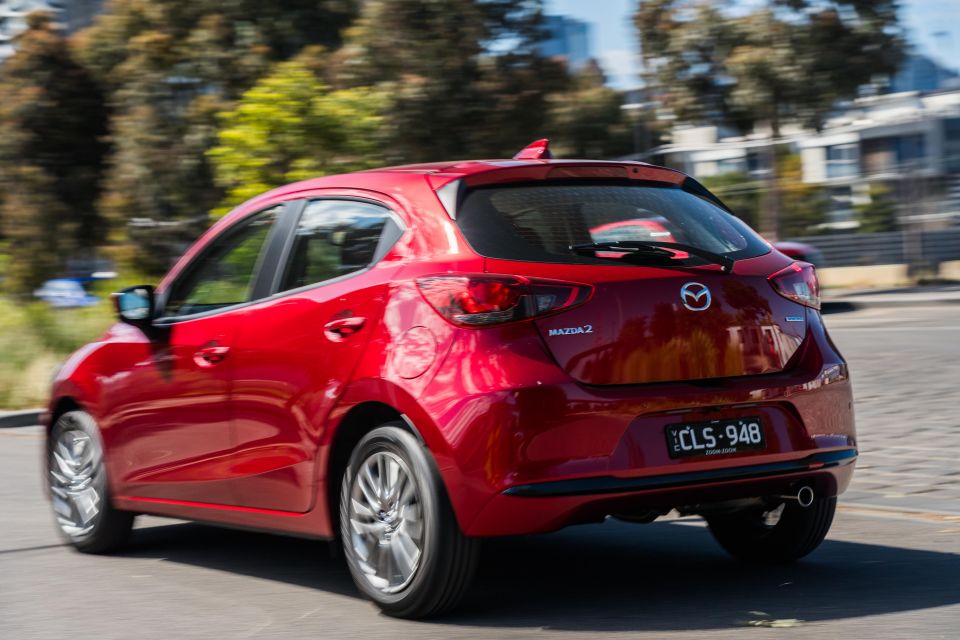
It does have quite a short ratio though, which means it feels like it’s uncomfortable spending longer periods in first gear. Second gear is often the better choice at low speed.
There’s a small suggested gear indicator on the dash, which always seemed to want to be two gears higher than whatever gear was engaged. I rarely followed its suggestion, mostly because lugging up a 40km/h hill in sixth gear didn’t seem right.
Getting into reverse is done by pushing down on the gear shifter and moving it up and to the left of first. It’s a variation of the safety reverse lock-out we’ve seen on other manual shifters, and it works quite well.
The only issue I could imagine someone having in the Mazda 2 is accidentally selecting reverse when hurriedly shifting into first at the lights.
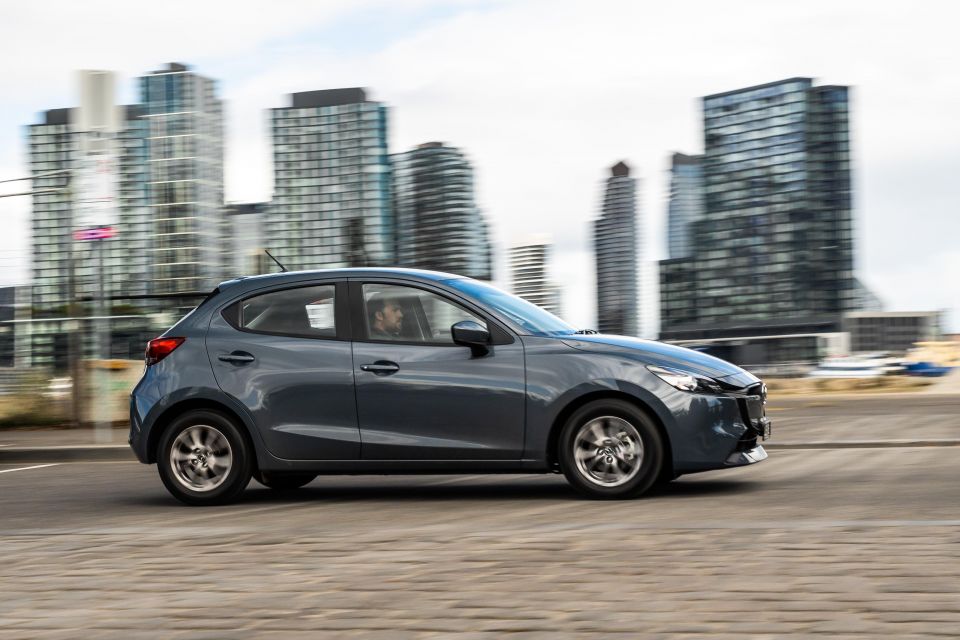
It won’t be a problem if you’re paying attention, but it pays to just take care and make sure you have actually selected first gear.
Otherwise, it’s quite a neat package. While the interior could do with a similar overhaul to what we’ve seen on other Mazda models, the driving experience offers just about all you could ask for from a car like this.
The Mazda 2 is available in four trim levels.




Mazda 2 G15 Pure equipment highlights:
The updated Mazda 2 has not been tested by ANCAP and is therefore unrated. It previously wore a five-star rating based on testing conducted in 2015.
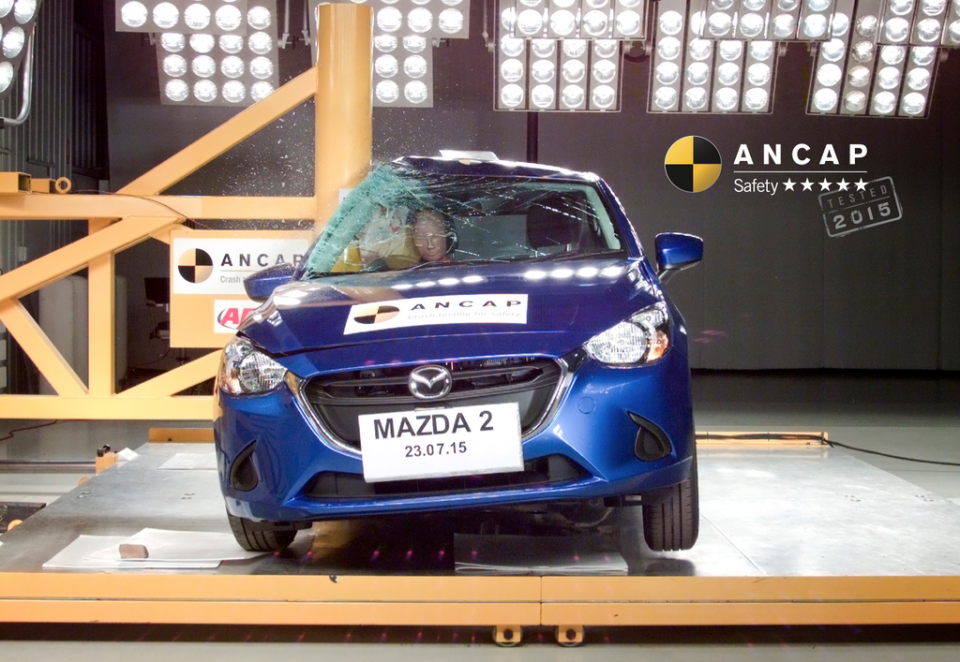
All models come standard with the following safety equipment:
The G15 Evolve and above get traffic sign recognition, while the G15 GT gains a surround-view camera, front parking sensors, and adaptive cruise control.
The Mazda 2 is backed by a five-year, unlimited-kilometre warranty.

Servicing is required every 12 months or 15,000km, whichever comes first. The first five services offer capped prices, which have been broken down below.
| Service | Price |
|---|---|
| 12 months or 15,000km | $334 |
| 24 months or 30,000km | $536 |
| 36 months or 45,000km | $396 |
| 48 months or 60,000km | $526 |
| 60 months or 75,000km | $334 |
| Total | $2126 |
Buy your new car without the stress. It's fast, simple and completely free.

Great service from Travis and team, second time I have used this business would not hesitate to recommend them to anyone
Craig C.
Purchased a Ford Ranger in Sunshine Coast, QLD
CarExpert helped Craig save $7,224 on his Ford Ranger, now let us save you on your next new car.
Get your BEST priceThe Mazda 2 is still a solid player in the small car conversation.

It’s getting on in years and isn’t the cheapest new car you can buy, but it packs a sizeable punch and can hang with the new kids on the block without breaking too much of a sweat.
The base Mazda 2 isn’t without its downsides though. Its infotainment system is dated and there’s a tiny boot, while its engine offers just enough power to get it moving but without too much haste.
It could also do with some kind of additional storage on the interior, even if it was a temporary solution. Fold-out cupholders come to mind for the front, which would free up some space for more practical storage on the centre console.

There’s no complaints about the driving experience in town. Being a small car means it’s nimble and easy to manoeuvre into whatever space it needs to fit into.
The manual transmission is a quality item and it’s easy to operate. Anyone from older people who grew up driving manuals to younger generations with less experience can hop in and feel right at home, which means there’s quite a shallow learning curve compared to other larger cars.
If you’re wanting a more active driving experience, the base manual is perfect. Sure, you can get more tech and some nice upgrades by spending a bit more money, but if you can live comfortably with what the G15 Pure offers you’d be mistaken to look any further.

Click on the images for the full gallery
MORE: Buy a Mazda 2 MORE: Everything Mazda 2
Where expert car reviews meet expert car buying – CarExpert gives you trusted advice, personalised service and real savings on your next new car.
Max Davies is an automotive journalist based in Melbourne, Australia. Max studied journalism at La Trobe University and stepped into the automotive world after graduating in late 2023. He grew up in regional Victoria, and with a passion for everything motorsport is a fan of Fernando Alonso.


Max Davies
3 Months Ago
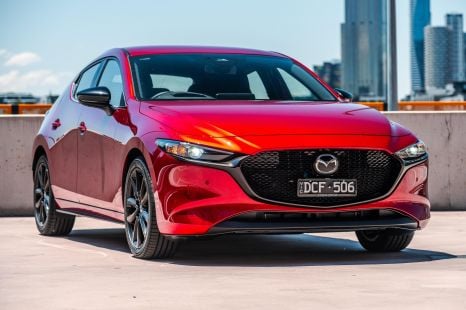

Josh Nevett
2 Months Ago
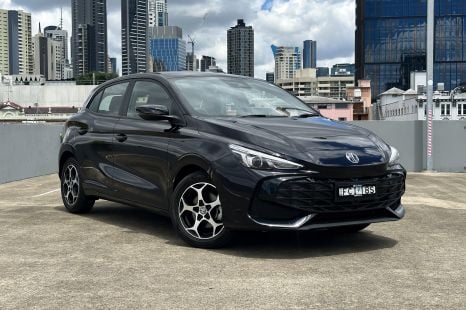

William Stopford
2 Months Ago


Josh Nevett
2 Months Ago


Josh Nevett
2 Months Ago


Matt Campbell
2 Months Ago